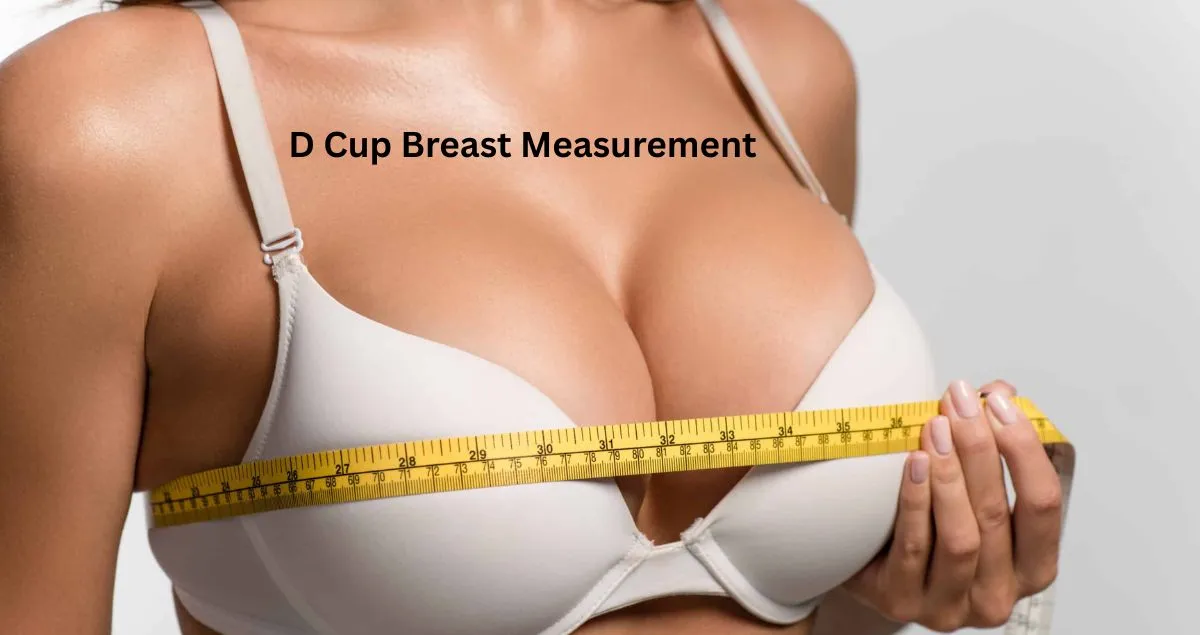A D cup breast measurement refers to the difference between the bust and the band size. It is not a fixed size but depends on the overall bra size. For example, a 34D is different from a 36D, even though both have a D cup label.
The “D” in D cup means there is about a 4-inch difference between the chest band and the fullest part of the bust. But how big is that in real life? Let’s compare.
D Cup Measurement Comparison
| Band Size | Bust Size (inches) | D Cup Measurement |
| 32 | 36 | 32D |
| 34 | 38 | 34D |
| 36 | 40 | 36D |
| 38 | 42 | 38D |
| 40 | 44 | 40D |
As seen, D cups vary in volume based on the band size. A 40D will have more volume than a 32D.
Is a D Cup Big for Most Women in the U.S.?
Yes, in the U.S., a D cup is considered above average. The average cup size has increased over the years, with many women now wearing C or D cups due to better fitting bras and changes in body types. So, while D cups are larger than average, they are also quite common.
How Much Do D Cups Weigh?
On average, D cup boobs weigh between 15 to 23 pounds total, depending on the woman’s body size and breast density. Each breast can weigh about 7 to 11 pounds. Factors such as fat distribution, glandular tissue, and hormonal levels play a role.
This weight can sometimes cause back pain, shoulder tension, and even posture problems, especially in women with smaller frames.
Are D Cups the Same for Everyone?
Absolutely not. A common myth is that all D cups are the same size. This is not true. This sizing varies by band. A 34D is smaller than a 38D, even though they are both labeled D cups. The actual volume increases as the band size increases.
So, when someone asks, “How big are D cups?”, the best answer is: “It depends on the band size.”
Common Challenges With D Cup Boobs
Many women with D cups experience:
- Difficulty finding well-fitting bras
- Back and neck pain from the added weight
- Trouble during physical activity
- Unwanted attention
While many celebrate fuller busts, they come with practical concerns that affect comfort and health.
How to Reduce Cup Size from D to B?
If you’re wondering how to reduce cup size from D to B, you’re not alone. Many women look for ways to ease discomfort or achieve a smaller silhouette. Here are safe and practical options:
1. Exercise
High-intensity cardio and strength training can reduce overall body fat. Since breasts are made of fat and glandular tissue, they may shrink over time.
2. Dietary Adjustments
Eating a clean diet with low processed sugar and carbs can help reduce fat across the body, including the chest.
3. Posture and Compression Bras
Good posture and compression bras can reduce the appearance of breast size and help relieve tension.
4. Medical Options
For significant discomfort, breast reduction surgery may be considered. It’s a safe procedure done for medical or cosmetic reasons.
Consult a healthcare professional before choosing any major change.
Choosing the Right Bra for D Cup Size
D cups need more support than smaller sizes. Choosing a good bra includes:
- Wide straps to reduce shoulder pressure
- Full coverage cups for better support
- Underwire for structure (if comfortable)
- Moisture-wicking fabrics during workouts
Brands like ThirdLove, Wacoal, and Panache offer high-quality bras for D cup breasts.
D Cup Size in Pop Culture
There’s no denying it—D cups are often idealized in media and fashion. However, the reality behind the size involves more than looks. Comfort, support, and fit matter far more in daily life than any letter on a label.
Summary: Is D Cup Big?
So, is a D cup big? In most cases, yes. It’s larger than average but not extremely rare. Understanding cup sizes goes beyond the alphabet. Factors like body shape, bra band, and health needs matter just as much.
If you’re living with D cup boobs, the key is to find the right support, stay healthy, and focus on comfort over trends.
If you’re navigating the world of D cups, you’re not alone. Whether you’re looking for the perfect fit or exploring reduction options, knowledge is power. Comfort always comes first. Click here for more information.
Frequently Asked Questions
1. How big is a D cup breast measurement in inches?
It’s about 4 inches more than your band size. For example, a 34D has a 38-inch bust.
2. How much do D cup boobs weigh on average?
Between 15–23 pounds total, depending on density and body size.
3. Is D cup considered large or average?
In the U.S., it’s above average but quite common.
4. Can I reduce from D to B cup naturally?
Yes. With exercise and diet, you can reduce fat and possibly decrease breast size.
5. Are all D cups the same across bra sizes?
No. A D cup on a 32 band is smaller than on a 38 band.
